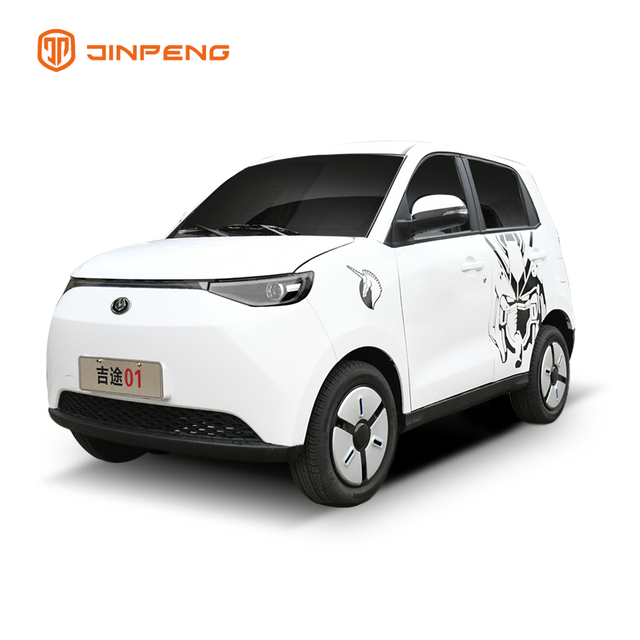Electric vehicles are gaining popularity as an eco-friendly alternative to gasoline cars. But what makes them so special?
Understanding the key components of an EV is crucial to appreciating its performance. In this post, we’ll answer the question, “What is the most important thing in an electric car?” and explore other factors that contribute to its success.
What Makes an Electric Car Different from a Traditional Gasoline-Powered Vehicle
Introduction to Electric Cars vs. Internal Combustion Engine (ICE) Vehicles
Electric cars (EVs) and traditional gasoline-powered vehicles are fundamentally different. EVs use electric motors and batteries for power, while internal combustion engine (ICE) vehicles rely on gasoline or diesel. This change eliminates the need for exhaust pipes and combustion engines, contributing to cleaner air and fewer carbon emissions. EVs are also more energy-efficient, using less energy per mile compared to traditional cars, thanks to their advanced motors and the absence of heat loss that happens in a combustion engine.
Key Components of an Electric Car
Battery Pack: The heart of an EV. It stores the energy that powers the entire vehicle, and its size and efficiency directly influence how far an EV can go on a single charge.
Electric Motor: These motors convert energy from the battery into mechanical motion, propelling the car. They are quieter, more efficient, and have fewer moving parts than traditional engines, requiring less maintenance.
Charging System: EVs need to be charged to power their batteries. There are several ways to charge, including home chargers and public fast-charging stations.
Thermal Management: This system ensures that the battery and motor stay within optimal temperatures. Overheating can decrease performance, so cooling systems like fans and coolants are essential.
The Most Important Thing in an Electric Car: The Battery
Why the Battery is the Heart of the EV
The battery is the main source of power for the electric motor. It stores the energy needed to run the car and determines how far you can travel on a single charge. Lithium-ion batteries are typically used because they offer a good balance of power, weight, and cost. Ongoing advancements in battery technology are reducing costs, increasing range, and making EVs more affordable and accessible for everyone.
Battery Range and Longevity
Battery range refers to how far an EV can go on a single charge. Most EVs today can go between 150 to 370 miles on one full charge, but that range varies depending on the model and battery size. Battery longevity is also a key factor. Over time, the battery’s ability to hold a charge decreases, but regular charging habits and optimal conditions can help maintain it for many years.
Battery Charging Speed and Infrastructure
Charging speed varies depending on the type of charger:
Level 1 Chargers: Slowest, can take up to 24 hours to fully charge.
Level 2 Chargers: Faster, taking around 4 to 8 hours.
DC Fast Chargers: The fastest, providing 80% charge in about 30 minutes. The growing network of charging stations is making it easier for EV drivers to find a charging spot. As charging infrastructure improves, it reduces the barrier to EV adoption.
Environmental Impact and Sustainability of Batteries
Sustainable practices are critical for the future of EVs. While lithium-ion batteries are efficient, they require materials like lithium, cobalt, and nickel, which can be environmentally and ethically problematic if mined irresponsibly. Recycling and improving the sustainability of battery production are essential. The push for cleaner battery production methods and ethical sourcing of materials is growing.

What Role Does the Electric Motor Play in EV Performance?
Electric Motors: The Silent Powerhouses
Electric motors are central to EV performance. Unlike combustion engines, they don’t have to burn fuel, making them far more efficient. They operate quietly and provide a smooth driving experience. In an EV, there are typically one or two electric motors, depending on whether the vehicle is all-wheel drive or not. They are powered directly by the battery and convert the stored energy into mechanical movement.
Acceleration and Torque in Electric Vehicles
One of the key benefits of electric motors is their instant torque. This means that when you press the accelerator, the car responds immediately with power. EVs often feel faster and more responsive than gasoline cars because of this smooth and instantaneous acceleration.
Motor Maintenance
Electric motors have far fewer moving parts than combustion engines, which means less wear and tear. This results in lower maintenance costs over time. For example, EVs don’t require oil changes, and the brake systems last longer due to regenerative braking. Overall, maintenance costs for electric motors are significantly lower than for traditional vehicles.
The Importance of Regenerative Braking in Electric Cars
What is Regenerative Braking?
Regenerative braking is a system that helps conserve energy while slowing down the vehicle. Instead of using traditional friction brakes, which convert kinetic energy into heat, regenerative braking channels some of the energy back into the battery for later use. This helps improve efficiency and range, especially during city driving.
Benefits of Regenerative Braking
Increased Range: By recapturing energy, regenerative braking extends the range of an EV, making it more efficient.
Reduced Brake Wear: Since the system uses the motor to slow the car down, it reduces the need for traditional brake pads, lowering maintenance costs.
The Charging System: How Do Electric Cars Get Their Power?
How Electric Cars Are Charged
There are a variety of ways to charge an EV, with the most common being home charging stations. For daily use, many drivers charge their cars overnight at home using a Level 2 charger. Public charging stations are also available, including fast chargers that provide a quick boost when needed. The availability of chargers is expanding, and many networks are becoming more accessible with apps to help drivers locate them.
Charging Speed and Time
Charging times depend on the charger:
Level 1 Chargers: Can take up to 24 hours to fully charge an EV.
Level 2 Chargers: Takes about 4 to 8 hours.
DC Fast Chargers: Charge an EV to 80% in just 30 minutes. With the rise of ultra-fast charging technology, waiting times are getting shorter, helping alleviate concerns about long charging durations.
EV Charging and Range Anxiety
Range anxiety is the fear that an EV’s battery will run out of charge before you can find a charging station. However, as the charging infrastructure expands and the driving range of EVs increases, this concern is becoming less of an issue. Wireless charging technology and faster charging options in the future could further ease range anxiety.

Thermal Management: Keeping Your EV Running Smoothly
What is Thermal Management in EVs?
Thermal management is essential for the performance of electric cars. The battery, motor, and power electronics need to be kept at a temperature that allows them to function efficiently. Thermal management systems use coolants, radiators, and fans to regulate these temperatures and prevent overheating, which could reduce the lifespan of the components.
Impact of Thermal Management on Performance
If the battery or motor gets too hot, it can reduce efficiency and even cause damage. By managing temperatures effectively, these systems ensure that the EV runs at its best and lasts longer. Proper thermal management also helps improve the overall driving experience by maintaining performance under various driving conditions.
Additional Key Components That Affect Electric Car Performance
Vehicle Control Unit
The VCU is like the brain of the electric vehicle. It coordinates various systems in the car, including motor speed, battery temperature, and acceleration. This central control helps optimize performance and ensures the car operates efficiently.
Power Electronics
Power electronics include components like inverters and converters. They manage the flow of electricity from the battery to the motor, ensuring that power is used effectively. These components help improve energy efficiency, making the car run more smoothly and saving energy.
Chassis and Body Design
The design of an EV’s body plays a significant role in its efficiency. By using lightweight materials like aluminum and magnesium, manufacturers can reduce the overall weight of the car. This makes the car more efficient, helps extend the driving range, and improves safety by reducing the risk of injury in case of an accident.
Factors Affecting the Overall EV Driving Experience
Driving Range
The driving range of an electric car depends on various factors, including battery size, driving style, and road conditions. EVs are generally best for city commutes, but some models offer longer ranges for road trips.
Charging Infrastructure
The accessibility of charging stations is crucial for EV adoption. As charging infrastructure expands, driving an EV becomes more convenient. Widespread availability of public charging stations will make long trips more manageable and reduce the likelihood of running out of charge.
Maintenance and Cost of Ownership
Electric cars typically require less maintenance than traditional vehicles. There are no oil changes, fewer moving parts, and longer-lasting brakes due to regenerative braking. Over time, this results in lower maintenance costs and higher savings for EV owners.
What are the Future Trends in Electric Car Technology?
Advancements in Battery Technology
Battery technology is evolving rapidly. Solid-state batteries, which offer higher energy densities and faster charging times, are being developed. These innovations could significantly reduce costs and increase range, making EVs even more practical.
Autonomous Driving and EVs
The integration of autonomous driving technology with electric vehicles is on the rise. EVs are ideal candidates for autonomous driving due to their smooth operation and reliance on advanced technology. This development could lead to safer, more efficient driving experiences.
The Shift Toward Sustainable Manufacturing
As demand for electric cars grows, manufacturers are focusing on making the production process more sustainable. This includes using ethical mining practices, improving battery recycling, and reducing emissions during manufacturing. Sustainable practices will play a crucial role in the future of electric vehicles.
Conclusion
Battery, electric motor, charging system, and thermal management all play crucial roles in an electric car’s overall performance. The most important component is the battery, but every part works together to make the EV efficient, environmentally friendly, and cost-effective.
FAQS
Q : What is the life expectancy of an electric car battery?
A: An electric car battery typically lasts 8-15 years, depending on factors like usage and maintenance.
Q : How often do I need to charge my electric car?
A: Charging frequency depends on your driving habits. Most EV owners charge overnight at home for daily use.
Q : Can I charge my electric car at home?
A: Yes, you can charge your EV at home using a Level 1 or Level 2 charger.
Q : Do electric cars need regular maintenance?
A: Electric cars require less maintenance than traditional vehicles. There’s no oil change, and brakes last longer due to regenerative braking.
Q : Are electric cars worth the investment in the long run?
A: Yes, EVs are cost-effective in the long run due to lower fuel costs, fewer maintenance needs, and tax incentives.
















